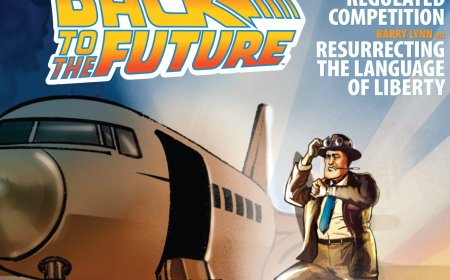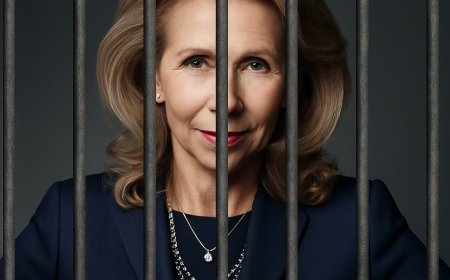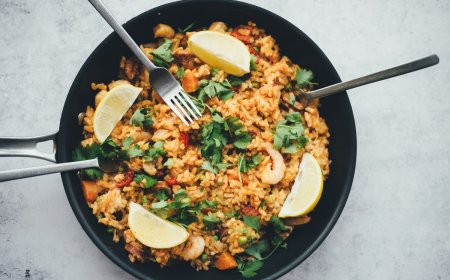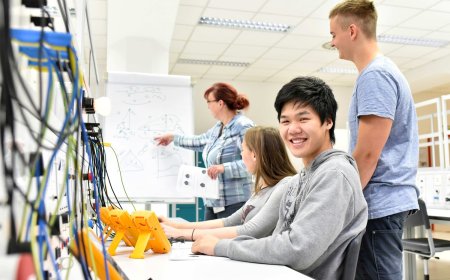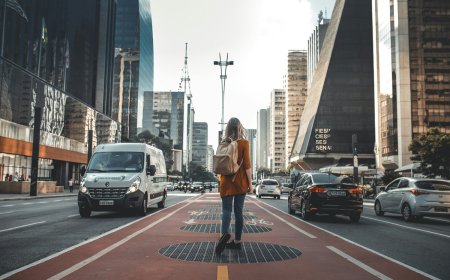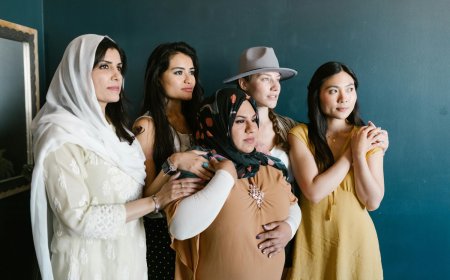Learning to Unlearn: Lessons Learned from Research and Creative Practice with Irish Travellers
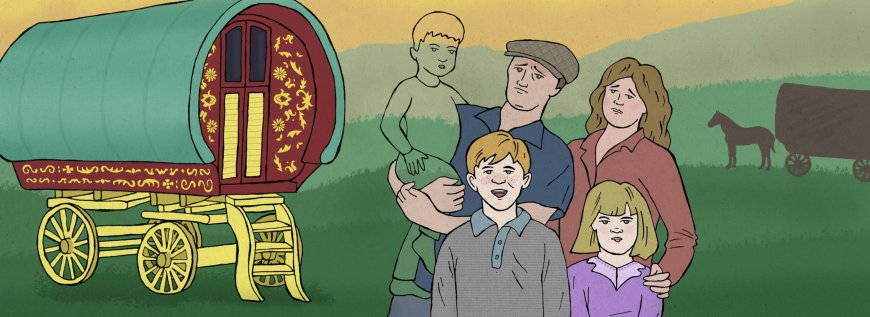
I. Introduction
The first official maps of Ireland date back to the colonial period, from the Down Survey in 1655 and the Ordnance Survey in 1824 (Kearns, 2022). These maps erased the experiences of Irish Travellers, an ethnic minority recognised by the Irish government in 2017, through place name changes and the exclusion of Traveller accommodation sites. The Traveller Community Mapping Coolock project was launched in 2022 to refuse this colonial mapping agenda by highlighting the lived experiences of belonging and unbelonging by Coolock Travellers (Pavee Point Traveller and Roma Centre, et al. 2022). The project results from a research team from the national Irish Traveller organisation, Pavee Point Traveller and Roma Centre, and the Coolock Travellers community centre TravAct, working in collaboration with a supporting research team of students and staff at the Department of Geography at Maynooth University, led by Professor Karen Till and Dr Rachel McArdle. As stated on the introduction to the Story Map (Pavee Point Traveller and Roma Centre et al., 2022), in the process of creating the physical wooden community map and digital Story Maps ‘Travellers in Coolock reclaimed their right to be on the map’.

Figure 1. Detail of TravAct and Pavee Point Coolock Community Map, May 2022. Photo: Traveller Mapping Coolock Research Team.
This blogpost reflects upon my own experience as a research assistant to the project as a then second-year PhD student new to community-engaged research. As part of my Master’s in Spatial Justice I took a class on ‘Public Engagement and Spatial Justice’, where I was introduced to an earlier StoryMap project, ‘Pavee Roads Home’, which also resulted from a collaboration by Pavee Point researchers and a Maynooth Geography team, the latter of which was again led by Professor Till and Dr McArdle. After a brief overview of the project, this blogpost will focus on three lessons I learned as a first-time research assistant and early career PhD researcher that have shaped my personal research journey in different ways: being open to mistakes, growing through discomfort, and the importance of collaboration.
II. Overview of The Travellers Community Mapping Coolock project
From the beginning the partnership between Pavee Point, TravAct and Maynooth Geography was built upon the exchange of knowledge. The project was Traveller-led with outcomes that would be relevant to the Traveller community in Coolock. The map would be made by Travellers, for the purposes of intergenerational storytelling, and for documenting the lived experiences of Travellers in Coolock (Pavee Point Traveller and Roma Centre et el., 2022). Maynooth Geography played a supporting role in the creation of the community maps, offering skills in community mapping as a geographic research process and later in GIS and story mapping.

Figure 2. Members of the Pavee Point, TravAct Coolock, and Maynooth University Geography Research Team at pilot mapping workshop, TravAct, September 2021. Photo: Pavee Point.
At the beginning of the project, it was agreed that there would be a community map created for Travellers and a digital map available for Travellers and a general public. The community map was a physically large wooden map with four panels and resulted from a series of mapping workshops and events with a smaller group of Traveller researchers, sometimes with Maynooth Geographers, held at TravAct in 2021 and 2022. These workshops culminated in two large mapping events for the entire Coolock Traveller Community in May 2022. Three generations participated in identifying places where they felt they belonged and had positive experiences, and places where they had negative experiences and felt unbelonging.
The idea of places of belonging/unbelonging emerged from discussions of the complex experiences of place Travellers in Coolock had but these maps do not claim to be representative of the whole Coolock Traveller population. The ‘Places of Belonging’ map illustrates the shift from unbelonging to belonging through Traveller led relationship building, activism, collective action, and leadership. The ‘Places of Unbelonging’ section provides a selection of masked testimonies that capture how discrimination and racisms still have negative effects on the Traveller community in the areas of Health, Accommodation, Education, Employment, and Surveillance. Their experiences were situated within the context of existing Traveller research and policy advocacy about structural racism and discrimination resulting in these forms of social and spatial injustice. Experiences of place are subjective; no two individuals will experience the same place in the same exact way. Places change through time, personnel changes combined with material changes to the landscape and services available, mean that the ‘experiences, meanings, and associations for local residents’ change too (Pavee Point Traveller and Roma Centre et el., 2022).
At the larger community mapping events, people were asked to place star stickers next to places where they had positive experiences and memories, and dot stickers on places where they had negative experiences. The stars and dots were colour coded by gender and generation. While some people placed multiple stickers, others just shared stories or preferred to watch, placing no stickers. Some people had mixed feelings as their experiences of certain places had changed over time. As one Traveller researcher noted: ‘People might want to put down a positive even if there are negatives about a place because that’s like saying the place you live is negative’ (ibid.). In general women placed more stickers than men. In a post-mapping workshop, one Pavee Point researcher observed that ‘The older women are key knowledge holders. They’re really important people in the community with regards to storytelling, intergenerational relationships, and passing down information’ (ibid.). Intended for the community, this map is now located at TravAct and has also been displayed at Pavee Point events.
As a research assistant, at the community mapping events in TravAct in May 2022, I recorded stories around the wooden community map, helped peel unyielding stickers from their backing, and found markers when participants or team members from TravAct and Pavee Point wanted to add forgotten places to the map. In the post-mapping period, I took on a data organisation and transcription role. I was also trained in ArcGIS Story Mapping by senior team member Sasha Brown which enabled me to work on the maps for the latter stages of the research project.

Figure 3. A participant adding to the map Photo: Traveller Community Mapping Coolock Research Team, May 2022.
Throughout the research process I gained new skills as a researcher and I learned more about Traveller histories and experiences, particularly in relation to the Irish government’s treatment of Travellers. I also learned skills unrelated to recording audio in busy spaces or finding historical places with a local name. Moving from doing readings about feminist and participatory research processes to actually putting them into practice was daunting, and I now turn to a discussion of three lessons learned for those new to community engaged research.
III. Lessons Learned
1. Be Flexible!
My experience as a new PhD researcher, was much like how Billo and Hiemstra (2013: 314), described, as being like ‘steeping into an unknown abyss’ or, as one of the senior researchers told me on my first day at the first Travellers Mapping Coolock mapping event (11 May 2022), ‘I was going through a trial by fire’. I was eager to learn about how community engaged research was done in practice but also very apprehensive about making mistakes. Although I had read Rachel McArdle’s (2022) article on flexible methodologies, it was not until the end of my very first experience with in-person community mapping that I came to learn that what I thought were catastrophic mistakes were ‘normal’ and can even contribute to the project, thereby becoming important redirections.
For example, my main task on the first mapping day was ensuring that the recorder was working, the levels were correct, and the audio files were being saved properly. We had hoped the mapping would take place outside, but the weather did not cooperate, so we were in a small room indoors at TravAct. It was suggested that I leave the recorder at the top of the mapping table, to best capture the stories the participants were telling around the map.
The mapping room was never completely silent all day. There was a buzz of movement and voices, and it was exciting to hear the stories and discussions. As I listened, I was nervous because I knew the recordings were going to be sonically chaotic. I remember thinking, ‘I pity whoever would have to transcribe these recordings’, and that pity I would have later welcomed when I spent many hours in the following weeks trying to do just that. I will return to these recordings and transcripts below.

Figure 4. Team members prepare for a community mapping event at TravAct, May 2022. Photo: Pavee Point Traveller & Roma Centre.
This ‘mistake’, of recording everything at once, however, shaped the subsequent mapping event. As Billo and Hiemstra (2013: 319) suggest, moving from the planning stage to the field involves the acknowledgement that methods may need to be adapted or dropped. The project research team from Pavee Point, TravAct, and Maynooth Geography evaluated the first day of community mapping and made collective decisions about how the process would change for the second event. We decided to limit the number of people in the mapping room at a time and set up another researcher to conduct one-to-one recordings in a quieter, different room. This worked much better, reflecting the importance of flexible methodologies, that according to McArdle (2022: 2), ‘allows researcher to be open and adaptable to changes within the research’.
McArdle (2022: 8) argues further that such changes to the first research plan should not be viewed as ‘a loss or a harrowing of ideas, but as an opening up, using an alternative lens’. The changes suggested and implemented by the project team capture the differences between the idealised version of research and the reality of publicly engaged practices in a real-life situation. Because, according to Billo and Hiemstra (2013: 324), the research process is a ‘malleable, fluid extension of one’s initial vision’, research in practice ‘inevitably accompanied by edits, revisions, and feedback’ (Billo and Hiemstra, 2013: 324). This is especially true for participatory action research, including community mapping. According to Kindon et al (2009: 91) PAR researchers must be ‘able to be flexible and accommodate chaos, uncertainty, and messiness; able to tolerate paradoxes and puzzles and sense their beauty and humour’.
As the Traveller Community Mapping Coolock research team adopted a flexible approach to participatory research, following McArdle’s (2022) discussion, it allowed us all to be open to change, but particularly for new researchers, like me, it allowed us to ‘grow and develop without being fearful of doing research incorrectly’ (ibid., p. 621). I learned that researchers do not have control over how research processes unfold in lived social spaces, and that flexibility is essential to successful community-engaged research.
2. Discomfort with growth is to be expected.
Another lesson I learned as a new PhD researcher was that fieldwork is not always comfortable. On the second community mapping day I was told to be in the background observing the process and taking notes of what worked and what did not. In our meetings prior to both of the mapping events, it was suggested that if we needed to, we could excuse ourselves or retreat to a more private space to take brief jottings after engaging with participants, so as not to be disrespectful or make people feel uncomfortable. This advice came from Dr McArdle who had experience doing participant observation and engaged research in community organisations during her PhD research and she found it useful in her fieldwork. I wrote in my field notes that ‘despite the fact that I knew it was okay to do this, the team know I was asked to take note, the participants did not’. I was afraid of making people uncomfortable so I started leaving blank pages so when I held my notebook my one-word jottings could not be seen by participants. This was not because I didn’t want them to read any of my notes but because I was not able to figure out if my notetaking was making people feel observed in a way that could hinder their interactions and sharing of stories. Later, when I was invited into the mapping room for a session to take notes, I noticed that some participants would watch me any time my pen moved. So, I tucked my notebook away and decided to rely on headnotes for the rest of the evening.

Figure 5. Team members lead a mapping event at TravAct Coolock in May, 2022. Photo: Traveller Community Mapping Coolock Research Team.
Rachelle Chadwick (2021: 569) proposes that feelings, like feeling discomfort, become part of methodological praxis. For Sara Ahmed (2014) feelings are products of relations between people, bodies, spaces, and discourses. Thus, research can also be thought of as an ‘affective praxis’. Affect within research and analytic encounters are the result of what Chadwick (2021: 557) describes as ‘intersubjective and sociomaterial dynamics’. She/They describe emotions as ‘trans-subjective residues/actants’ with epistemic, political, and theoretical significance (Ibid: 558). Chadwick (2021: 559) further argues that ‘staying with’ the discomfort of epistemic uncertainty and the feelings brought up in and through research interactions are critical to efforts to develop ethical and accountable feminist research. Similarly, Ahmed (2014) argues, ‘we have to stay with the feelings that we might wish would go away’. In acknowledging that I was, as a feminist researcher, to quote Chadwick, a ‘feeling, sensing, responding, intersectional, embodied, emplaced and conflicted subject’ and that my ‘encounters with others’ affected me, I choose to read my discomfort as what Chadwick describes (2021: 571) as a route to ethical accountability and growth as a researcher.
3. Collaborate don’t exploit!
The examples above were not the only instances of discomfort I felt. Team members came and left throughout the project which resulted in changing interpersonal dynamics. When we turned to the process of creating a digital version of the physical community map months later, for example, members of both the Maynooth and Pavee Point/TravAct teams were absent, busy, or starting to feel the effects of working on a long-term project during Covid, namely research fatigue. But due to the poor quality of the community mapping event recordings, particularly from the first mapping event as noted above, at a check in meeting with the Traveller research team in July 2022, the team felt we should re-record some stories so that a range of voices could be included in the StoryMap. However, the additional recording session revealed that the TravAct team was burnt out by the project, specifically by repeating stories that they felt had already been told. During that last check-in meeting, I especially felt empathetic towards two Traveller researchers who came to the meeting. I realised I also had an almost guilty feeling which made me uneasy.
By September, I was promoted to a senior researcher working on the digital Story Map and was asked to attend Culture Night at the Pavee Point Traveller and Roma Centre as a representative from Maynooth Geography. In the days leading up to Culture Night I had initially felt excited, to see how a different Traveller community would interact with the map. That excitement turned into a dull anxiety when I learned the project team leaders wanted to try to re-record stories that we had not managed to secure audio for at the last check-in meeting, namely places of accommodation, education, and past places. Following the suggestions of researchers from TravAct and Pavee Point, who were the experts and community members in this project, and who wanted to have clear audio for their ‘Places of Belonging’ Story Map, an effort was made by Maynooth Geography to do this as supportive allies, rather than exploitative researchers. Though I knew that I would be seeing and speaking to the TravAct research team at the Culture Night event, I had not really anticipated having to record more stories. Although it was not the first time the project had made me feel uneasy, this uneasiness was new and coupled with a heightened awareness of the potential for unequal power relations in the research process. My uneasiness was founded in a fear of exploiting the Traveller researchers’ time, energy, and generosity in the project.

Figure 6. Research team and visitors to Culture Night 2022 at Pavee Point . Photo: Derek Speirs.
At the Culture Night event some of the TravAct team, who were told we could be asking them to re-record stories, expressed frustration with having to re-tell stories they felt had already been captured. In reading Chadwick (2021) I have now reflected upon the fact that my actions as a researcher were influenced by my affective encounters with the Traveller researchers; the ideas I suggested to the research team were directly shaped by how I interacted with and was empathetic towards the Traveller researcher’s frustration with the audio re-recording process.
Near the end of Culture Night, in an effort to negate the feeling that we were asking too much of an already exhausted group of researchers, I let our partners know that I had already started going back through the audio from the first mapping event after the July check in meeting and, in the chaos, found some positive stories we could use. But I needed help to identify the specific places people referred to. As an outsider, I couldn’t decipher which places they were talking about. Also, I was unfamiliar with the use of local Traveller placenames and only had access to the names given by official mapping practices.
For example, we asked for clarification about the two graveyards which were marked on the wooden map as, Campions Graveyard and the New Graveyard, and both I and another researcher had been confused earlier that evening as to which one was which. We all laughed as the two Traveller researchers explained the difference, while jokingly trying to confuse us even more, which led to more laughter and broke any tensions and discomfort already felt in the conversation. The Traveller researchers told me to send them a list of participants and they would clarify which places the participants told stories about.
These audios, after careful editing to remove as much of the background noise as possible, and with participants’ clarification about placenames, became part of the final StoryMap highlighting Traveller places of belonging. Their voices and stories added life to places where fond memories were made evident in shared laughter and wistful tones.
The experience of trying to navigate a collaborative research relationship as an early PhD researcher while also trying to come to terms with how best to embody respectful feminist, anti-colonial research practices, taught me that collaborative research relationships with communities should centre around a mutually beneficial practice and outcomes, and should not be exploitative. Being mindful of people’s time, energy, and other commitments is necessary first step in a healthy working relationship.
IV. Conclusion
My time spent as a research assistant on the Traveller Community Mapping Coolock project taught me a variety of professional development skills including, but not limited to, audio recording and editing, transcription, video editing and subtitling, ArcGIS and Story Mapping. However, it was the lessons I had not expected to learn that have had a lasting impression on how I approach research.
I have learned that having a flexible approach to research better prepares you for inevitable changes to your research plan. While I used to read all changes or mistakes as a negative reflection of my research capabilities I have since started to understand my research as in-progress and ever evolving. A flexible approach allows me to fully lean into my feminist research framework of allowing themes to emerge from the artworks and literature I am exploring in my PhD.
I also learned that research discomfort is not uncommon, especially as an early career researcher. ‘Staying with the trouble’, following Haraway (2016), or the discomfort, following Chadwick (2021), makes it a starting point for thinking about the affective politics of feminist, anti-colonial research. Becoming a better researcher means always learning, trying, and growing, thus growing pains are to be expected and endured as what Chadwick (2021: 563) describes as ‘embodied reminders’ of a struggle towards affective solidarity and socially just modes of acting, thinking and researching.
One of the most important lessons I learned is that collaborative engaged research requires all parties to be conscious of the others time, energy, and generosity. Establishing and maintaining clear lines of communication between partners allows academics to be better allies to the communities they are working alongside. To conclude, publicly engaged collaborative research is not only valuable as a tool for social and spatial justice but also as a learning opportunity for all involved, whether that is from inside the academy or not.

Figure 7. Members of the Pavee Point, TravAct Coolock, and Maynooth University Geography Research Team at the launch of the Traveller Mapping Coolock StoryMap, Maynooth University, November 2022. Photo: Pavee Point.
— By Sophie Thiesen
Sophie Thiesen is a PhD Researcher in the Department of Geography at Maynooth University. This blogpost was developed from a conference paper delivered at the International Geographical Congress, 27th of August 2024.
Acknowledgements: I would like to thank the Pavee Point and TravAct team researchers for sharing their knowledge and stories, particularly Andy O’Hara, Mary Collins, and Michael Collins, who were patient and graciously helped me find locations, and dealt with my many emails with kindness and understanding. I also want to thank my fellow research assistant Kate Aston for helping me navigate this project, for the endless discussions, and for encouraging me to write honestly. Finally, I would like to thank Professor Karen Till and Dr Rachel McArdle for the opportunity to learn and grow as part of such wonderful project team.
The Traveller Community Mapping Coolock project, including for Geography Research Assistants like myself, was generously funded by the Irish Research Council ‘Engaging Civic Society’ New Foundations grant. Additional support came from: the Maynooth University Social Sciences Institute (MUSSI) and Maynooth University Experiential Learning Office (“Project Live” and “Summer Programme for Undergraduate Research (SPUR)”), as well as the main partners: Pavee Point, TravAct, and the Department of Geography at Maynooth University. For more information about the Traveller Community Mapping Coolock project, please contact: [email protected].
References
Ahmed, Sara. 2014. The Cultural Politics of Emotion. NED-New edition, 2. Edinburgh University Press.
Billo, Emily, and Nancy Hiemstra. 2013. ‘Mediating Messiness: Expanding Ideas of Flexibility, Reflexivity, and Embodiment in Fieldwork’. Gender, Place & Culture 20 (3): 313–28. https://doi.org/10.1080/0966369X.2012.674929.
Chadwick, Rachelle. 2021. ‘On the Politics of Discomfort’. Feminist Theory 22 (4): 556–74.
Haraway, Donna. 2016. Staying with the Trouble: Making Kin in the Chthulucene. Duke University Press.
Kearns, Gerry. 2022. ‘Official Maps and Community Mapping’. Blog. Eye on the World. 25 October 2022. https://maynoothgeography.wordpress.com/2022/10/25/official-maps-and-community-mapping/.
Kindon, S., R. Pain, and M. Kesby. 2009. ‘Participatory Action Research’. In International Encyclopaedia of Human Geography, edited by Rob Kitchin and Nigel Thrift, 90–95. Oxford: Elsevier. https://doi.org/10.1016/B978-008044910-4.00490-9.
‘MA GEOGRAPHY: SPATIAL JUSTICE | Maynooth University’. n.d. Accessed 19 August 2024. https://www.maynoothuniversity.ie/study-maynooth/postgraduate-studies/courses/ma-geography-spatial-justice.
McArdle, Rachel. 2022. ‘Flexible Methodologies: A Case for Approaching Research with Fluidity’. The Professional Geographer 74 (4): 620–27. https://doi.org/10.1080/00330124.2021.2023593.
Pavee Point Traveller and Roma Centre, TravAct Coolock, and Maynooth Geography. (2022). Traveller Community Mapping Coolock StoryMap: Storied Places of Belonging and Unbelonging, edited by Karen E. Till and Rachel McArdle. https://arcg.is/0Hryzy
Pavee Point Traveller and Roma Centre. 2022. ‘“Belongings” Exhibition – Opened on Culture Night’. Pavee Point (blog). 16 September 2022. https://www.paveepoint.ie/belongings-exhibition-open/.
Pavee Point Traveller and Roma Centre. 2024. ‘About the Project | Pavee Roads Home Storymapping Project’. Pavee Roads Home Storymapping Project. 2024. https://paveeroads.paveepoint.ie/about-the-project/.
TravAct. 2024. ‘About Us’. TravAct. 2024. https://travact.ie/about-us/.










